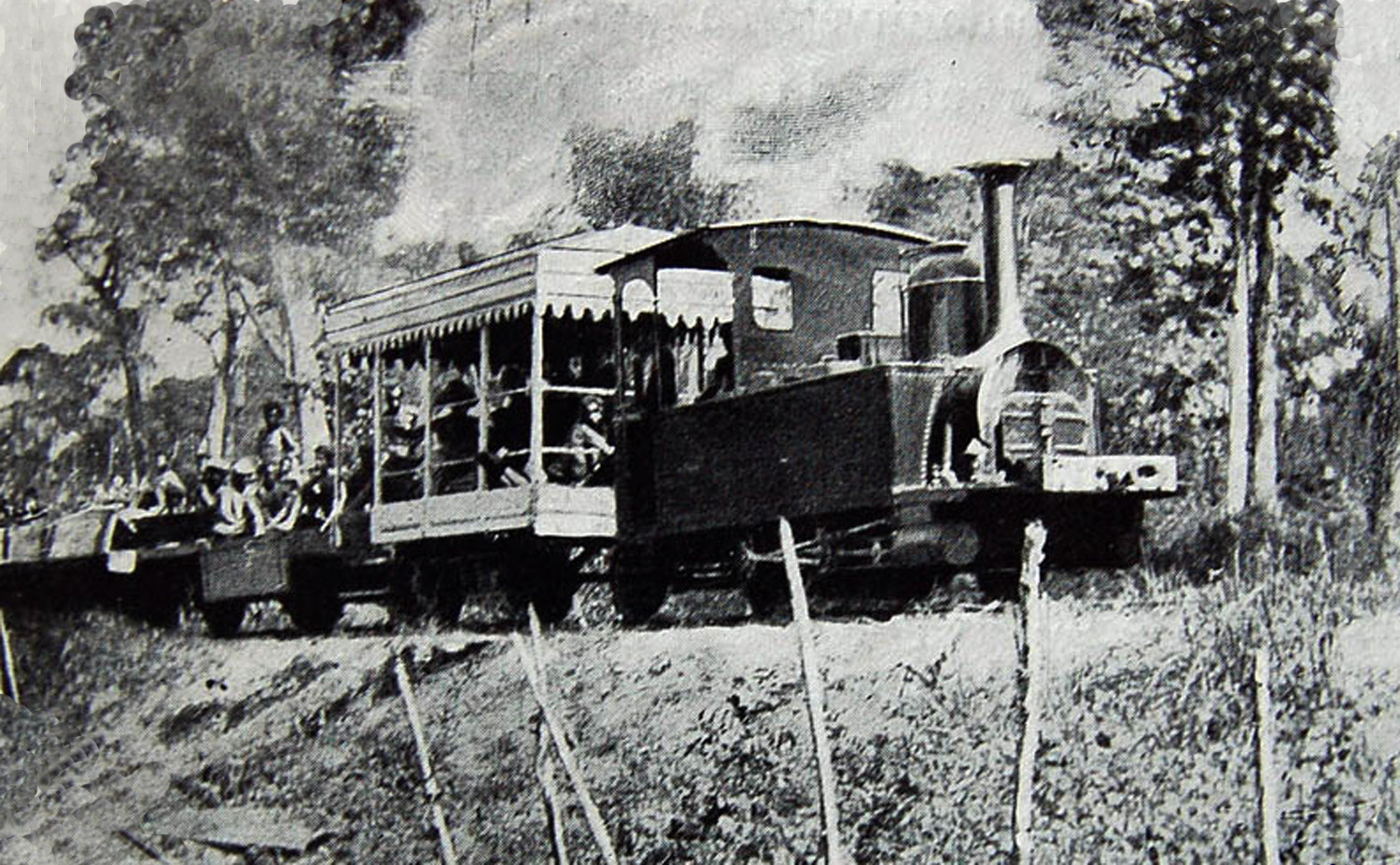
The Khôn island railway in the 1930s
The only working railway in Laos before 2009, the 7km Khôn Island line in Champassak province was built between 1893 and 1920 by the Saigon-based Compagnie de Messageries fluviales de Cochinchine, as part of the effort to assert a French presence in the Upper Mekong region.
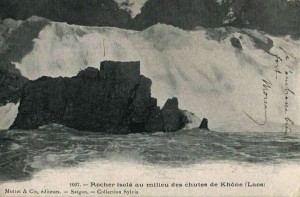
A colonial-era postcard of the Khôn Waterfalls
As they advanced their interests along the Mekong River, the French quickly found an insurmountable obstacle to navigation in the 15m high Khôn Waterfalls, located some 500km from the river mouth. Since the irregularity of its water flow mitigated against the construction of a lock system, they decided instead to build a portage railway to connect the two sections of river.
When it first opened in 1893, the line ran just 4km across the island of Don Khôn. Its primary function was to transport specially-prefabricated steamships which could be dismantled on one side of the Khôn Waterfalls and reassembled on the other, thereby linking Saigon and Phnom Penh with Pakse, Vientiane and Luang Prabang.
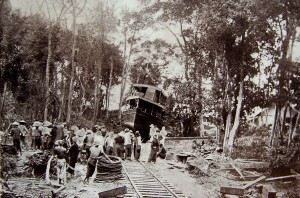
The riverboat “Trentinian” being moved delicately by rail across Khôn island
Initially a 0.6m gauge Decauville line, it was upgraded in 1897 to 1m gauge, though even at that stage, motive power was provided not by locomotives, but by requisitioned labourers.
By 1911, human power had been replaced by two Orenstein & Koppel 0-4-0T steam locomotives, and rolling stock on the line comprised a modest range of wagons and flat trucks. Thereafter, larger river vessels could be transported across the island without the need for disassembly.
In around 1920, the Khôn Island line was extended 3km northward across a 185m concrete viaduct to Don Det island, where a bigger berth was provided for steam ships at Ban Det, although the original wharf at Khôn Nord was still used at times of high water.
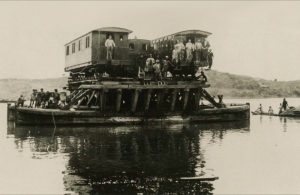
Thought to be the arrival of a Hanomag 0-6-0T (030T) and two carriages from the Saigon-Mỹ Tho line at Khôn south in 1928
In 1927, when the Saigon-Mỹ Tho line acquired new rolling stock courtesy of German war reparations payments, one of its original 15-tonne Hanomag 0-6-0T locomotives was shipped upriver to Laos along with several closed carriages, thereby improving standards of comfort for passengers.
Henri Cucheresset travelled the line en route from Hà Nội to Phnom Penh in 1924, three years before the arrival of this new rolling stock. In an article published in 1927 in the journal l’Eveil Économique, he provides us with an amusing account of what it was like to travel on the “Khône Nord-Khône Sud Express.”
The locomotive, which he describes as “never having been fussily maintained, that is to say, just enough to keep the wheels turning,” hauled “a deluxe car comprising a covered flat wagon with a garden bench in the middle, which has never seen paint” and “one or two flat wagons for freight.….This lovely ensemble advanced with a deafening clanking at 8km per hour.”
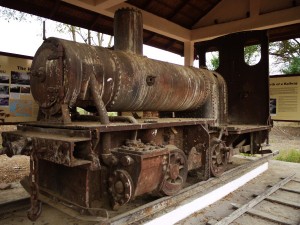
The exhibition at Ban Khon village incorporates the remains of a 1911-built Orenstein & Koppel locomotive named ‘Eloïse”
Following the Japanese occupation of Indochina, a treaty of 1941 redefined the Franco-Siamese boundary, awarding Khôn island to Thailand, and the railway line fell into disuse. After the return of the French in 1945, no attempt was made to reopen the line and the construction of a new road along the left bank of the Mekong in 1949 effectively rendered it obsolete.
In recent decades, the old track bed of this curious line has become a popular tourist attraction for visitors to southern Laos. In Ban Khôn village, where the line’s maintenance depot is believed to have stood, the rusting hulk of a 1911-built Orenstein & Koppel locomotive named “Eloïse” has survived and now forms part of a small outdoor exhibition on the history of the line.

A map of the Khôn island railway published in Madrolle, Indochine (1930)

Henri Lartilleux’s SNCF map, published in Frédéric Hulot, Les Chemins de fer de la France d’Outre-mer, vol. 1: L’Indochine-Le Yunnan [The French overseas railways, vol. 1: Indochina-Yunnan]. Saint-Laurent-du-Var: La Régordane éditions, 1990
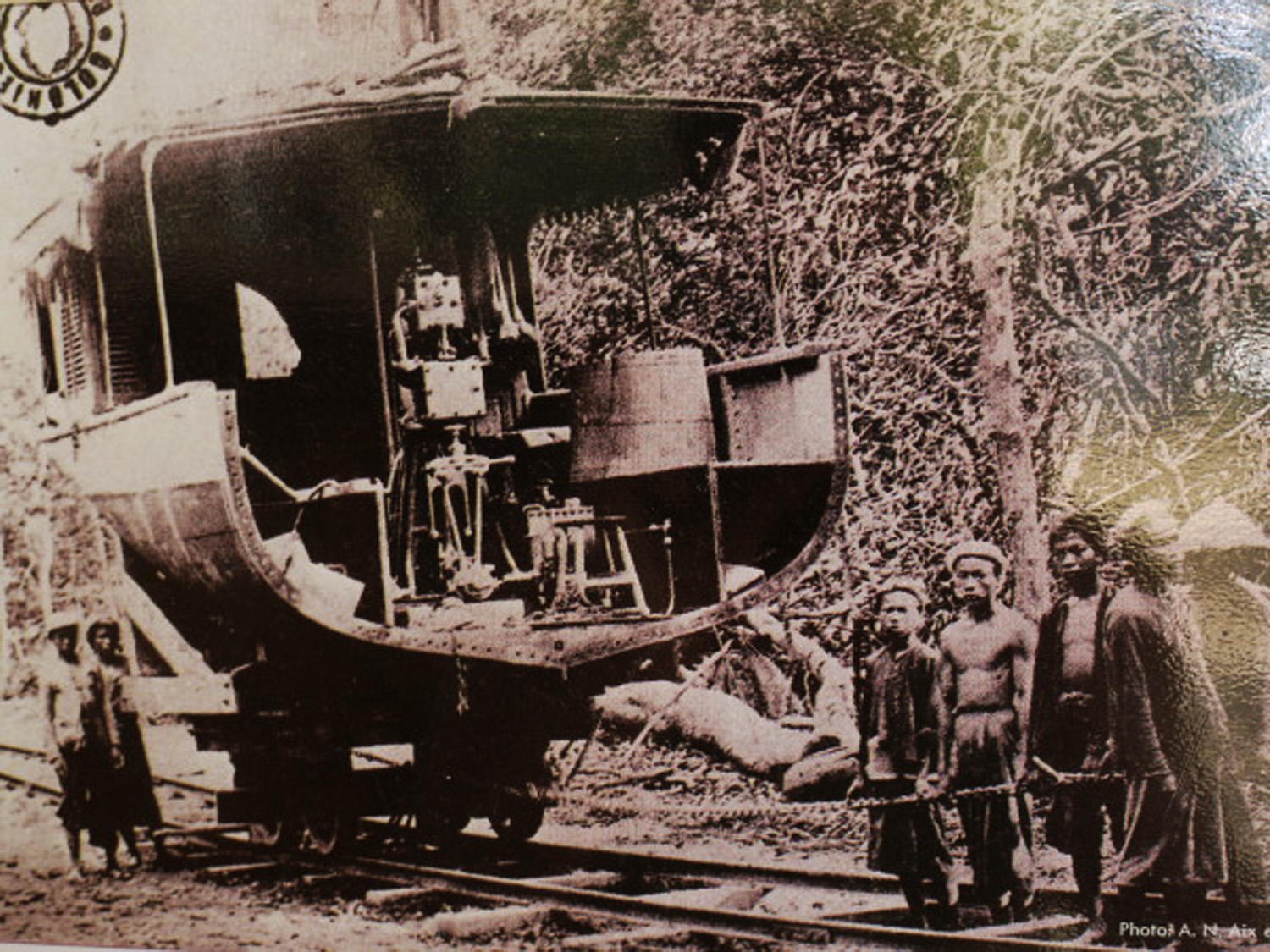
In the early days riverboats had to be dismantled before they could be transported on the line
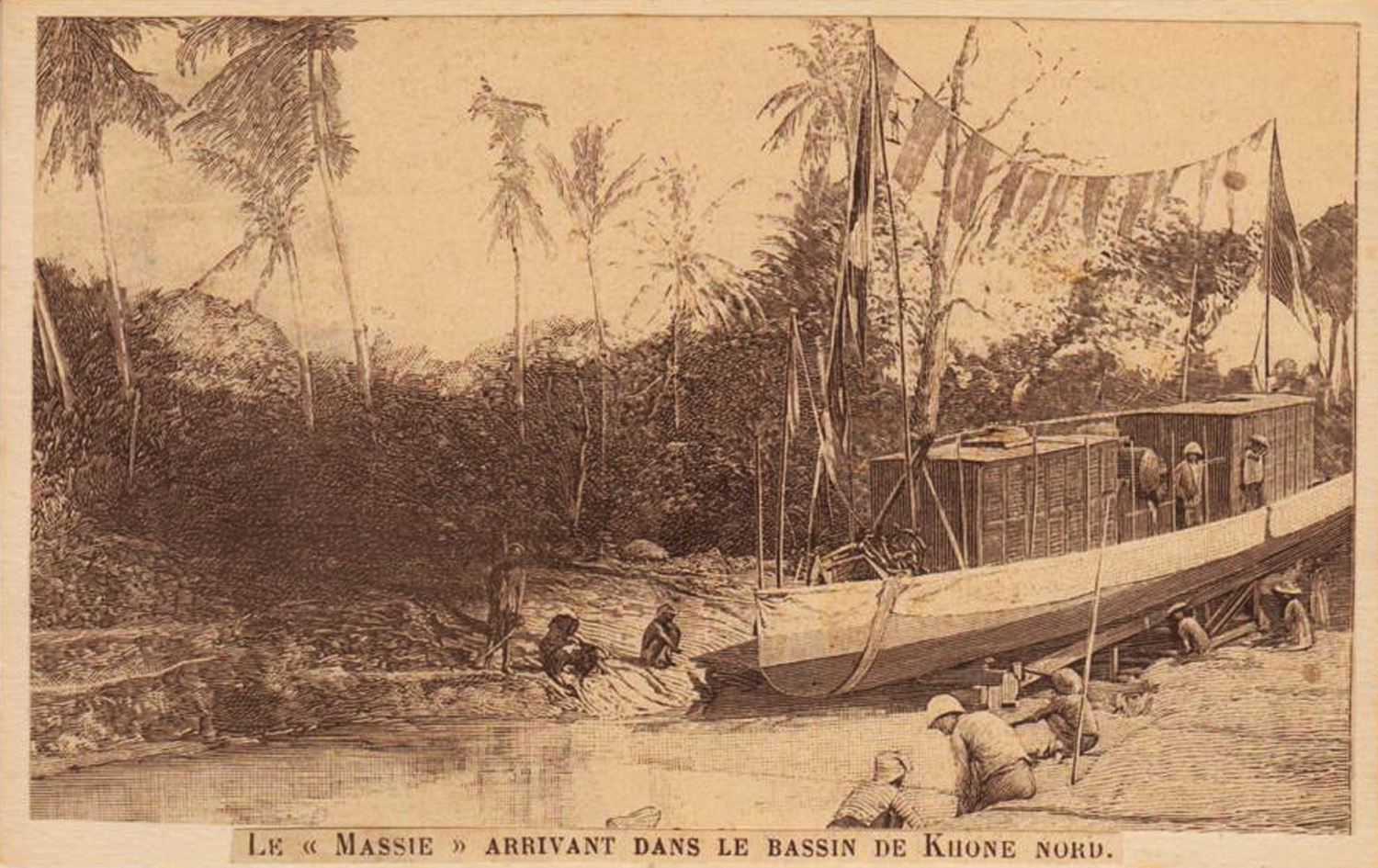
The riverboat “Massie” at Khôn Nord in 1898
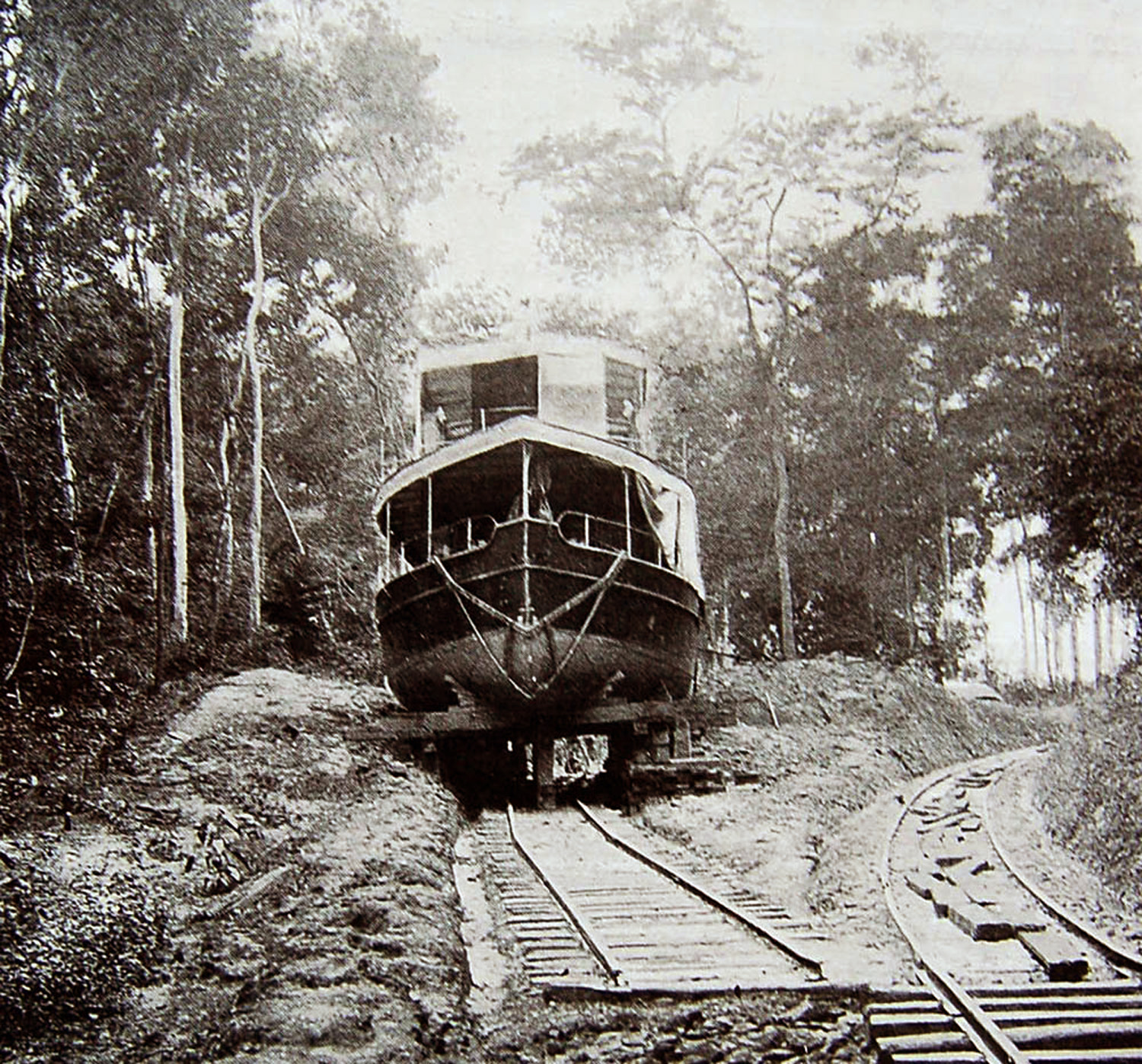
The riverboat “Trentinian” being moved by rail across Khôn island
Tim Doling is the author of The Railways and Tramways of Việt Nam (White Lotus Press, Bangkok, 2012) and also gives talks on Việt Nam railway history to visiting groups.
A full index of all Tim’s blog articles since November 2013 is now available here.
Join the Facebook group Rail Thing – Railways and Tramways of Việt Nam for more information about Việt Nam’s railway history and all the latest news from Vietnam Railways.
You may also be interested in these articles on the railways and tramways of Việt Nam, Cambodia and Laos:
A Relic of the Steam Railway Age in Da Nang
By Tram to Hoi An
Date with the Wrecking Ball – Vietnam Railways Building
Derailing Saigon’s 1966 Monorail Dream
Dong Nai Forestry Tramway
Full Steam Ahead on Cambodia’s Toll Royal Railway
Goodbye to Steam at Thai Nguyen Steel Works
Ha Noi Tramway Network
How Vietnam’s Railways Looked in 1927
Indochina Railways in 1928
“It Seems that One Network is being Stripped to Re-equip Another” – The Controversial CFI Locomotive Exchange of 1935-1936
Phu Ninh Giang-Cam Giang Tramway
Saigon Tramway Network
Saigon’s Rubber Line
The Changing Faces of Sai Gon Railway Station, 1885-1983
The Langbian Cog Railway
The Long Bien Bridge – “A Misshapen but Essential Component of Ha Noi’s Heritage”
The Lost Railway Works of Truong Thi
The Railway which Became an Aerial Tramway
The Saigon-My Tho Railway Line

